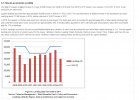searun
Well-Known Member
28 Years of Managing through applying fishery restrictions while avoiding addressing the real reasons behind stock declines and Canada is no further ahead in rebuilding East Coast Cod. Apparently we have learned nothing from our past failures, and here on the Pacific Coast DFO and the ENGO's plan to repeat the same failed strategy by focusing on low cost, ineffective fishery closures....not addressing the real root problems responsible for the collapse in the first place....does this sound strangely familiar????
Why can't we learn from our own history?
Here's a few clips from the article to peak your interest......
"Decades after the moratorium on cod fishing, the federal government has quietly released its vision to rebuild the northern cod stocks in Newfoundland and Labrador's waters."....more fishing closures!
"Northern cod numbers have ticked upwards since the 1992 moratorium brought harvesting and processing to a screeching halt.""But 28 years later, stocks remain well below pre-moratorium levels, and — in DFO terminology — remain squarely in a "critical zone."
"Fishing not the biggest problem"
The plan acknowledges that fishing is not the main reason cod numbers remain a shadow of its former teeming bounty."The primary threat limiting survival and recovery of 2J3KL cod today is high natural mortality," states the plan. (The 2J3KL refers to the fishing management zone.)
That natural mortality includes everything from seal predation to temperature effects but more so than those factors, the plan highlights shortages of food that cod need, particularly capelin.
"High mortality rates may be related to cod dying of starvation."
While the full annual cod numbers assessment didn't go ahead in 2020 due to the pandemic, DFO science this past spring showed cod are resorting to cannibalism to survive, with a non-profit conservation group calling for the rebuilding plan to show leadership in the area.
- Conservation group criticizes northern cod quota as 'irresponsible'
- With natural prey like capelin and shrimp in decline, cod are eating their young: DFO
"One of the only factors that we have any influence on is fishing effort, and that's what this plan focuses on," Diamond told CBC Radio's The Broadcast.
Sullivan disputed the starvation problem, saying there isn't enough evidence at the moment to support it, but he would like to see more investigation as to what's going on with the mortality rates.
"If the fish are not healthy, we've got to get to the bottom of it so we can understand it," he said.


